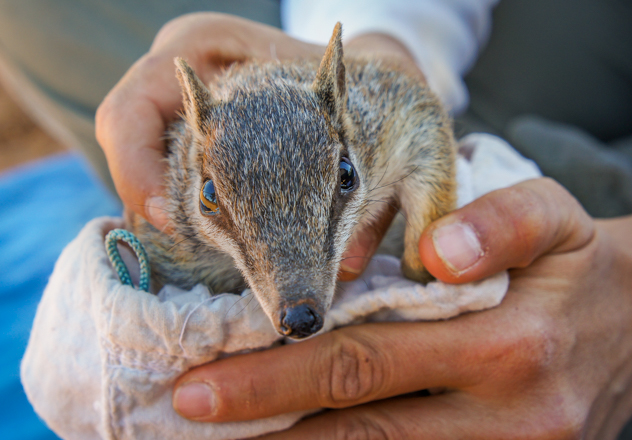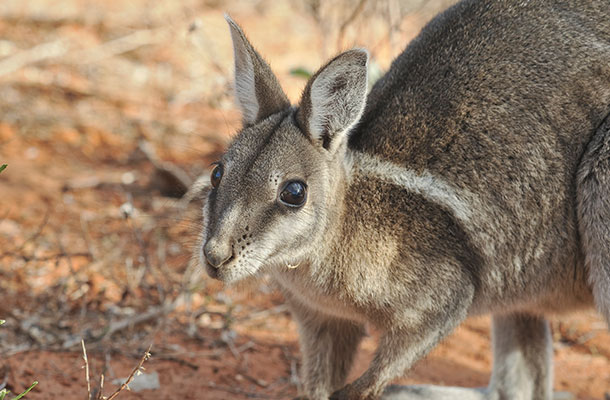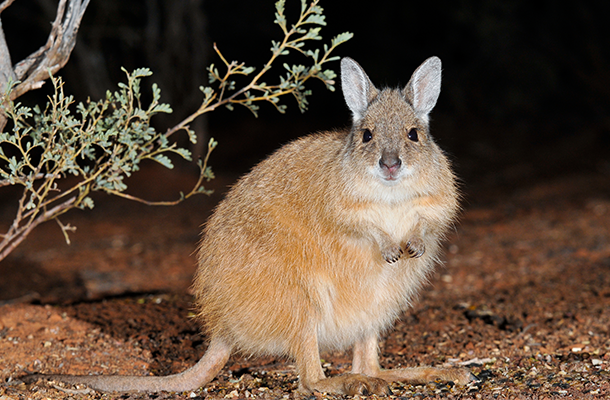September is National Biodiversity Month, an opportunity to highlight and celebrate Australia’s unique wildlife, diverse habitats, and rich, interconnected ecosystems in one of the most biologically diverse nations on Earth.
Sadly, more than 1,800 Australian animal and plant species are also on the brink of extinction. National Biodiversity Month provides an opportunity to focus on the plight of these endangered species and highlight the work Australian Wildlife Conservancy (AWC) is doing to protect and restore them.
Australia has the worst rate of recent mammal extinctions in the world: more than 10 per cent of Australia’s 273 mammal species has gone extinct since European settlement, and more than 100 native mammal species are on the brink of disappearing forever – including the animals featured in the video below.
Predation by feral cats and foxes, changed fire patterns and feral herbivores are the main threats driving the decline of Australia’s wildlife. Some of Australia’s most iconic mammals, such as the Numbat (Myrmecobius fasciatus), Greater Bilby (Macrotis lagotis), Bridled Nailtail Wallaby (Onychogalea fraenata) and Mala (Rufous Hare-wallaby, Lagorchestes hirsutus) are now either extinct in the wild or barely persist in just a fraction of their former range.
But there is hope: AWC is successfully halting the decline of some of Australia’s most endangered mammals and restoring their populations. AWC’s national reintroduction program is one of Australia’s few stand-out conservation success stories for these – and other – endangered native animals.
The Numbat has been reintroduced to three of AWC’s feral predator-free areas (with another two planned). AWC now protects approximately 500 Numbats – around half the global Numbat population. AWC’s new projects are expected to see these numbers double in coming years.
 © Wayne Lawler/AWC
© Wayne Lawler/AWC
The Bridled Nailtail Wallaby was believed to be extinct for much of the 20th century, until the chance discovery of a surviving population in 1973. AWC since reintroduced a population to our Scotia Wildlife Sanctuary in 2005 and now supports around 50 per cent of the global population of this species.
More recently, we reintroduced these wallabies to the Pilliga, NSW, in partnership with the New South Wales and Queensland Governments.
 © Wayne Lawler/AWC
© Wayne Lawler/AWC
The Mala (Rufous Hare-wallaby) is currently listed as extinct in the wild. AWC protects the Mala in feral predator-free areas at our Scotia and Newhaven Wildlife Sanctuaries. There are less than 500 individuals remaining of this species on the mainland; all in feral predator-free fenced areas. AWC is establishing a wild population of Mala within a vast 9,500 hectare fenced area at Newhaven. We estimate Newhaven will support as many as 2,500 wild Mala.
The Mala reintroduction at Newhaven in July this year marked the beginning of an ambitious rewilding program which is set to restore central Australia’s lost biodiversity.
 © Brad Leue/AWC
© Brad Leue/AWC
Nine more threatened mammal species are set to be returned to Newhaven; including the Red-tailed Phascogale, Numbat, Brush-tailed Bettong (Woylie), Greater Bilby, Golden Bandicoot, Western Quoll, Burrowing Bettong, Shark Bay Mouse and Central Rock-rat.
The Greater Bilby has been reintroduced by AWC to four feral predator-free areas, including to the Pilliga in NSW, where they have been absent for more than 100 years. Across the continent, Bilby populations have been reduced to fewer than 10,000 individuals. AWC currently protects 15% of the global Bilby population. With further Bilby reintroductions planned for Mallee Cliffs National Park and Newhaven Wildlife Sanctuary this figure is set to double.
Rather fittingly, September also includes National Bilby Day (8 September 2019) – a great excuse to celebrate this iconic Australian animal and highlight its plight.
Over the next 12 – 24 months AWC will be undertaking one of the nation’s most significant threatened species translocation programs: 27 translocations of 14 species, highlighting AWC’s leadership in this area. Most importantly, this program will see the future of at least 21 threatened Australian mammals secured as a result.
With your support, AWC is halting the decline of Australia’s biodiversity and securing the future of our natural treasures for generations of Australians.
Support AWC’s endangered mammal translocation and rewilding program
AWC helps protect a population of Kangaroo Island Dunnarts on Kangaroo Island.
Koalas inhabit eucalypt forests and woodlands in eastern Australia from north Queensland through to south-east South Australia.